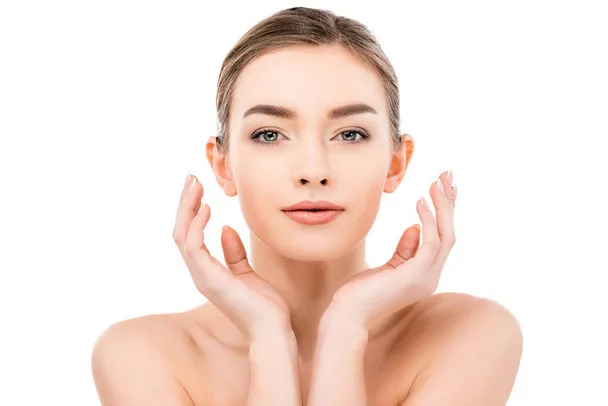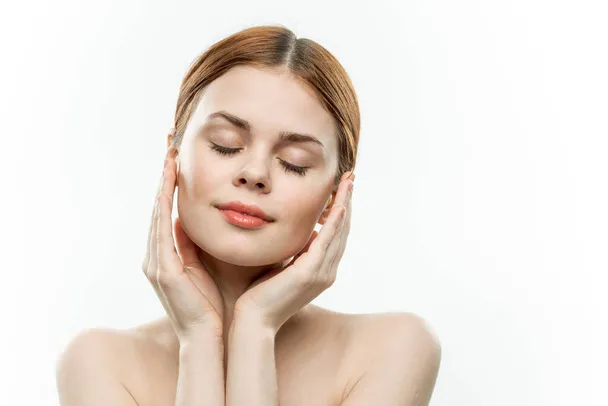Can You Get Eyebrow Dandruff? Here’s What To Know
Eyebrow dandruff, although less common than scalp dandruff, can still be a frustrating and embarrassing issue for those affected. While eyebrows may seem like an unlikely place for dandruff to occur, it can happen due to various reasons, including dry skin, skin conditions, or improper skincare habits. Understanding the causes and symptoms of eyebrow dandruff is the first step in effectively managing and preventing this condition.
Causes of Eyebrow Dandruff:
Dry Skin: Dry skin underneath the eyebrows can contribute to flakiness and dandruff, similar to the scalp. Various factors such as cold weather, low humidity levels, and the use of harsh skincare products can lead to dryness on the eyebrows. During colder months or in arid climates, the skin’s natural moisture barrier may become compromised, resulting in increased dryness and flakiness on the eyebrows. Additionally, certain skincare products containing harsh ingredients like alcohol or fragrances can strip the skin of its natural oils, exacerbating dryness and causing dandruff-like flakes to appear.
Seborrheic Dermatitis: Seborrheic dermatitis is a chronic skin condition characterized by red, itchy, and flaky patches that commonly affect areas rich in sebaceous glands, such as the scalp, face, and eyebrows. When seborrheic dermatitis occurs on the eyebrows, it can manifest as dandruff-like flakes and irritation. The exact cause of seborrheic dermatitis is not fully understood but is believed to involve a combination of genetic, environmental, and immunological factors. Individuals with seborrheic dermatitis may experience periodic flare-ups triggered by factors such as stress, hormonal changes, or certain skincare and haircare products.
Product Buildup: The accumulation of skincare products, makeup, or eyebrow styling products along the hair follicles and skin can lead to product buildup, contributing to dandruff-like flakes on the eyebrows. Heavy or occlusive products, such as thick moisturizers, facial oils, or waxy eyebrow pencils, may not fully absorb into the skin and can instead create a layer of residue that traps dirt, oil, and dead skin cells. Over time, this buildup can clog the pores and follicles on the eyebrows, leading to irritation, inflammation, and the appearance of dandruff. Proper cleansing and exfoliation of the eyebrow area are essential for preventing product buildup and maintaining clear, healthy skin.
Symptoms of Eyebrow Dandruff:
Flakiness: The most prominent and visible symptom of eyebrow dandruff is the presence of white or yellowish flakes on the eyebrows. These flakes can vary in size and texture but are typically smaller and finer than those associated with scalp dandruff. Flakes may become more noticeable when brushing or touching the eyebrows, and they may shed onto the surrounding skin or clothing.
Itchiness: Itchy eyebrows are a common accompanying symptom of dandruff. The presence of dry, flaky skin on the eyebrows can trigger sensations of itchiness and discomfort, prompting individuals to scratch or rub the affected area. Persistent scratching can further exacerbate irritation and inflammation, leading to a cycle of itching and flaking.
Sensitivity: The skin underneath the eyebrows may feel sensitive or tender, particularly in areas where dandruff is present. Increased sensitivity can result from inflammation and irritation caused by dryness, scratching, or exposure to certain skincare products. Individuals with eyebrow dandruff may experience discomfort or stinging sensations when applying skincare or makeup products to the affected area.
Thinning Eyebrows: In severe cases of eyebrow dandruff, prolonged inflammation and irritation may affect the health and growth of eyebrow hair follicles. Chronic inflammation can lead to follicular damage and hair loss, resulting in thinning or sparse eyebrows over time. Thinning eyebrows may be a secondary symptom of underlying dandruff-related inflammation and should prompt further evaluation and management to address the underlying cause.
Treatment and Prevention:
Gentle Cleansing: Initiating your eyebrow care routine with a gentle cleansing step is essential. Opt for a mild, fragrance-free cleanser that is specifically formulated for sensitive skin. Massage the cleanser into the eyebrow area using gentle, circular motions to effectively remove dirt, oil, and dead skin cells without causing irritation. Harsh or abrasive cleansers should be avoided as they can strip the skin of its natural oils, leading to increased dryness and flakiness.
Moisturize: Following cleansing, it’s crucial to replenish moisture to the skin underneath the eyebrows. Choose a hypoallergenic moisturizer or emollient that is suitable for sensitive or dry skin. Apply the moisturizer generously to the eyebrow area, ensuring complete coverage. Opt for products that are free of fragrances and harsh chemicals, as these can further aggravate dryness and irritation. Regular moisturization helps to maintain the skin’s natural barrier function and prevents dryness and flakiness.
Avoid Harsh Products: Be mindful of the skincare products, makeup removers, and eyebrow styling products you use, as these can have a significant impact on the health of your eyebrows. Opt for gentle, non-comedogenic products that are formulated without harsh or irritating ingredients. Fragrances, alcohol, and other potential irritants should be avoided, as they can disrupt the skin’s natural balance and exacerbate dryness and flakiness.
Anti-Dandruff Shampoos: In cases where seborrheic dermatitis is suspected as the underlying cause of eyebrow dandruff, incorporating medicated anti-dandruff shampoos into your skincare routine can be beneficial. Look for shampoos containing active ingredients such as ketoconazole or selenium sulfide, which are known for their anti-inflammatory and antifungal properties. Although these shampoos are typically used to treat scalp dandruff, they can also be effective in reducing inflammation and flakiness on the eyebrows. When using these products, take care to avoid contact with the eyes and follow the manufacturer’s instructions diligently.
Consult a Dermatologist: If home remedies and over-the-counter treatments fail to provide relief from eyebrow dandruff symptoms or if the condition worsens, seeking professional medical advice is essential. A dermatologist can conduct a thorough evaluation of your condition, identify any underlying causes or contributing factors, and recommend personalized treatment options. Prescription medications or procedures may be necessary to effectively manage eyebrow dandruff and alleviate associated symptoms.
Conclusion: Eyebrow dandruff, although troublesome, is typically manageable with appropriate skincare and treatment measures. By gaining insight into the causes, symptoms, and treatment options for eyebrow dandruff, individuals can proactively tackle this condition and maintain healthy, flake-free eyebrows.
Understanding the underlying factors contributing to eyebrow dandruff, such as dry skin, seborrheic dermatitis, product buildup, or poor hygiene, empowers individuals to implement targeted strategies for prevention and management. Simple practices like gentle cleansing, moisturizing, and avoiding harsh products can go a long way in maintaining the health and appearance of the eyebrows.
In cases where home remedies and over-the-counter treatments prove insufficient, seeking guidance from a dermatologist is advisable. A dermatologist can provide a comprehensive evaluation, identify any underlying skin conditions, and offer personalized treatment recommendations tailored to the individual’s needs. With proper care and attention, individuals can effectively address eyebrow dandruff and enjoy healthy, vibrant eyebrows once again.









